Psalmtooning? Well, I haven’t heard that word in about ten years. But I made it up, and I used to do it all the time back when my kids were little.
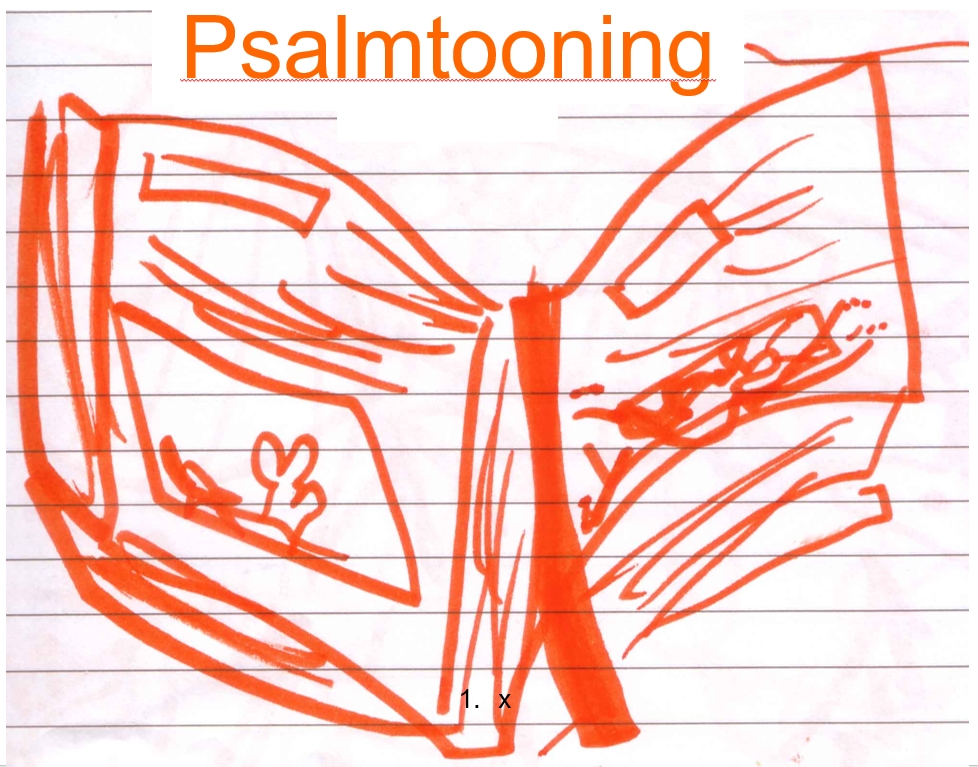
Psalmtooning is a form of Bible study that encourages children to use their natural love of cartooning to draw out the meaning from Scripture. (Draw it out; get it?) It works because there’s a real overlap between the way kids think and the way the Bible speaks. On the one hand, you’ve got children’s natural competence for making simple drawings that are more about ideas than about how things really look (these are cartoons, not oil paintings), and on the other hand you’ve got the biblical way of speaking with vivid imagery, concrete symbols, and catchy figures of speech. When you use the former to interpret the latter, you’re psalmtooning.
In the whole Bible, it’s the book of Psalms that has the most conspicuous imagery and symbolism, which are already halfway to visuals: “The name of the Lord is a strong tower; the righteous run into it and are safe.” In addition, the Psalms feature first-person speech, which invite the reader to put themselves into the Psalm: “In my distress I called unto the Lord.” And the Psalms are also bite-sized. Except for a handful of very long ones, the Psalms are short, self-contained compositions.
So here’s how to Psalmtoon. Get the kids, the Bible, and the art supplies together. You can start with nothing more than sheets of paper and markers, but you’ll find that most kids are motivated by having their very own blank books to fill up. If you don’t have a blank book, fold printer paper in half to make an 8.5 x 5.5 booklet, stapled in the middle. It’s important to set all the stuff out on the table and then make the little varmints wait; a little (age appropriate) suspense helps the process.
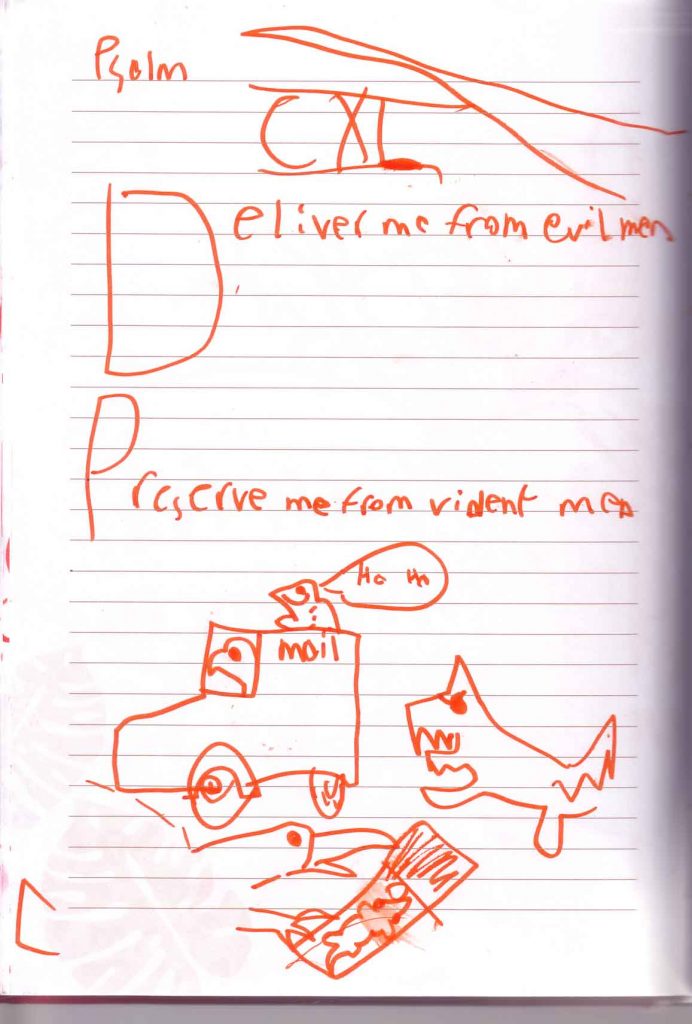
Now for the action: Pick a Psalm and read it aloud. No drawing is allowed yet; this is a listening exercise. What you’re all listening for together is imagery. You need one good image-idea that can be drawn, and while it doesn’t need to be an image that sums up the whole Psalm, or captures everything that’s going on, it does need to be a good representative image that catches the tone of the Psalm. So imagine starting with Psalm 23; the imagery is so direct and sustained that most listeners will pick out the same thing: a shepherd and some sheep in a landscape. But most Psalms don’t center on an image in the same way, so kids may need some help or prompting to identify a good image. Psalm 18, for instance, is hard: it’s fifty verses long (!) and begins with the more abstract “I love you, O Lord, my strength” before getting to “the Lord is my rock and my fortress and my deliverer.” Soon there are earthquakes and lightnings and armies and leaping over walls and everything else, so it’s a real judgment call to pick out a focal image.
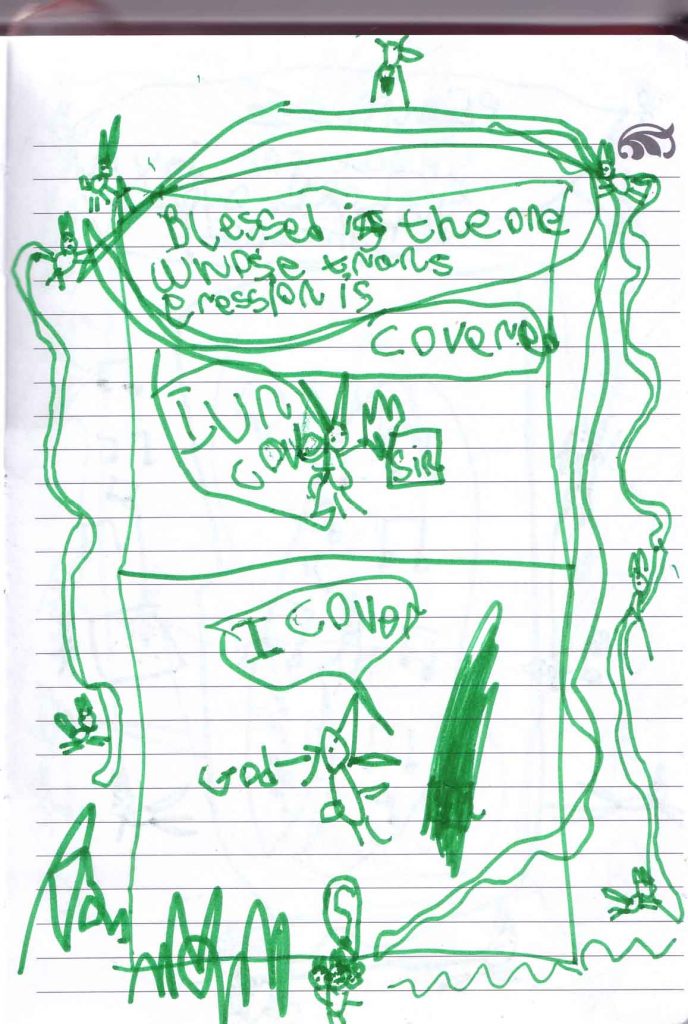
So after this first reading, talk through the imagery with them, with an emphasis on getting them talking about what they hear and what it makes them see in their mind’s eye. Then get them drawing. As they draw, re-read the Psalm. They don’t have to listen closely, and they don’t have to focus intently on it; the zone you’re trying to get into is that that magical drawing zone where their attention is working its way out through their fingers as they set up patterns on the page (this goes here; that goes there) and solve little problems (“you can only see one of his arms because he’s turned that way”). The words you’re reading are getting into them at some other level, almost like background music: you’ll be surprised how much they pick up. You’ll probably get through one to three re-reads, depending on length of Psalm and speed of cartooning.
The final step is the explanations: ask them to talk you through the drawing and explain what’s happening in it. Prepare to be surprised: when I call Psalmtooning a type of Bible study, I’m dead serious. This is age-appropriate visual interpretation of the word of God, and it is astonishing what kids can grasp and explain.
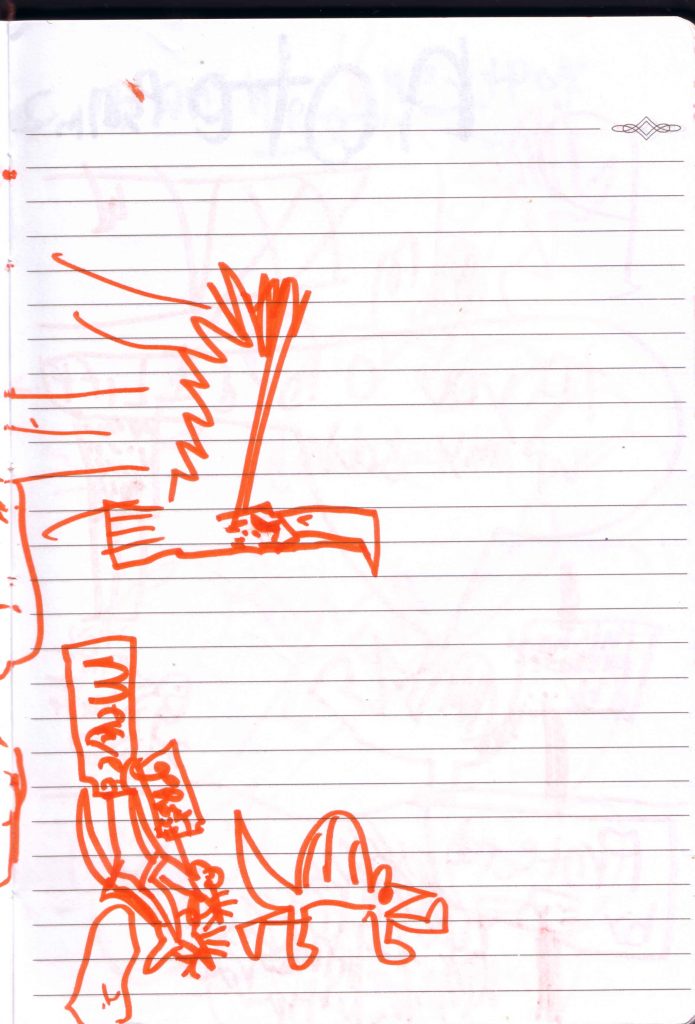
Keep things moving, keep things fun, and keep it as short as you can. Ideally, your kids will have a good time in the Bible and will look forward to the next time you can do it.
So, those steps, after gathering the material, are:
- Pray.
- Read the Psalm through (no drawing yet).
- Get the kids to start drawing the imagery.
- As they draw, read the Psalm aloud, slowly, a few more times.
- Get them to explain the drawings.
The Psalms are so rich that you are going to be dealing with an abundance of ideas, themes, images, and issues. If you get stuck in a rut, look up some medieval examples of illustrated Psalters (just do an online image search for that phrase). Psalmtooners aren’t the first people to notice that imagery and images go well together in the Psalms. You’ll notice one important technique is to combine the written words with the drawn pictures; especially to have a giant capital letter as the frame or anchor for the image. Try it!
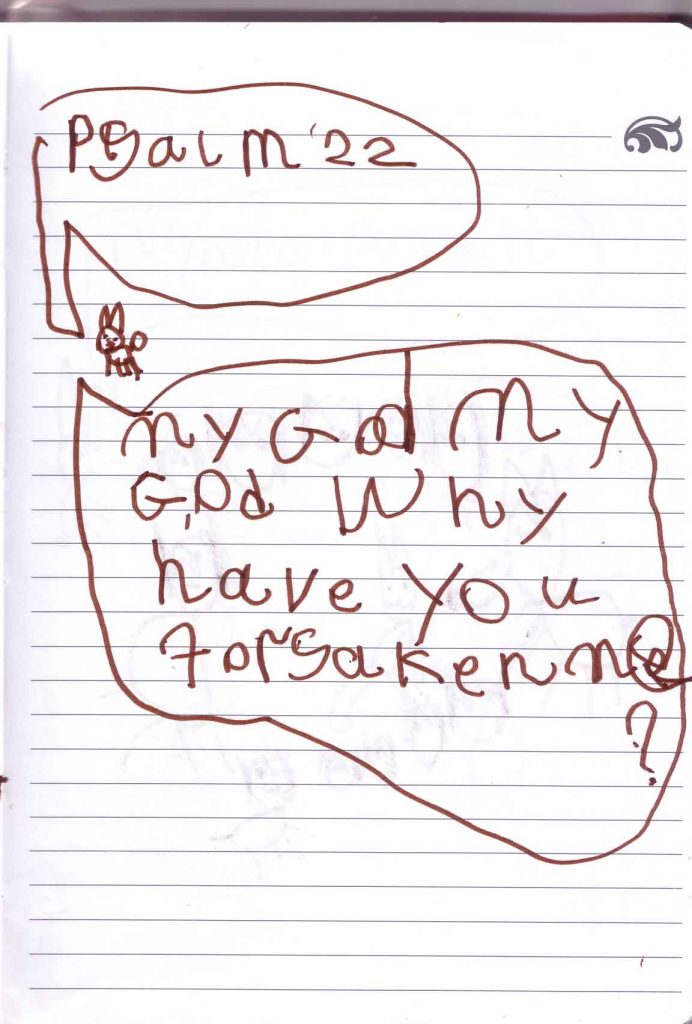
A host of issues will come up as you Psalmtoon together, and a bunch of opportunities to explore and explain the Bible. Almost immediately, kids will have to come up with a way of indicating in their drawings the presence of God in the Psalm. Do you draw God or not? I say work it out and talk through it. It’s important to be reverent, so if your kid decides to represent God by drawing Spongebob, you should nip that in the bud. But don’t scold. Here’s the thing about cartooning: it renders visible and explicit the kind of imagery that is rumbling around in your mind anyway. If you could crack open my mental life right now and pluck out the notion of God that’s rumbling around in there, it would not be noticeably better than the kind of stuff you’ll get from Psalmtooning. Encourage your kids to find appropriate ways of portraying what the Psalmist says about God: emphasize the Psalmist, for instance; perhaps God is present as a cloud or a hand reaching in or… well, what I’m saying is, try it. The Psalms speak about God as so real, so concrete, so active and present and powerful and alive that something holy may happen as your kids draw out the meaning of that.
Here’s a vintage snapshot of Psalmtooning at my house back in the day (we used notebooks that we got at Target):
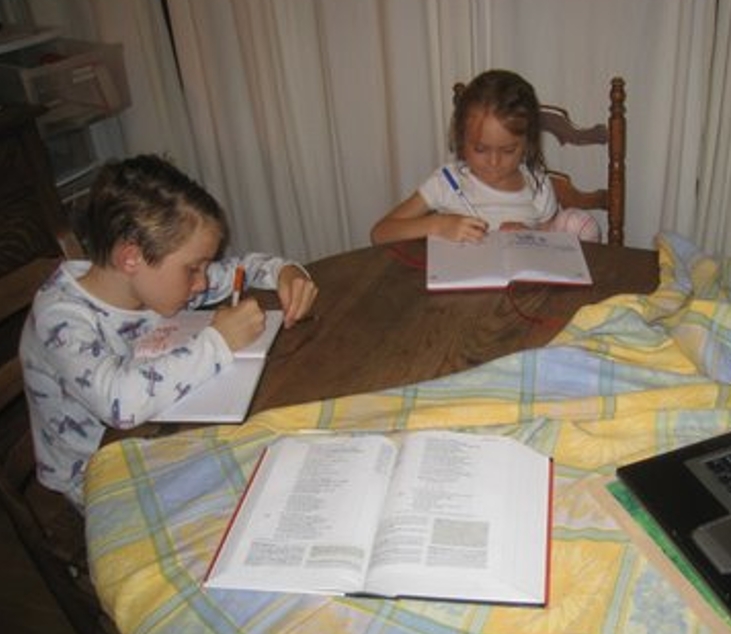
And here are some explanations I wrote up of what we did with Psalm 1, Psalm 2, Psalm 3, and Psalm 4. Click through for amazing insights into the Psalms!